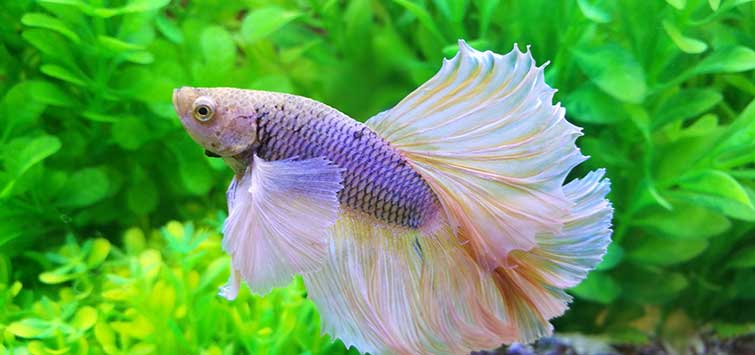Betta Fish Diet: What to Feed Your Betta for Optimal Health And Wellness
Betta Fish Diet: What to Feed Your Betta for Optimal Health And Wellness
Blog Article
How to Breed Betta Fish Efficiently: Professional Techniques and Insights for Hobbyists Aiming To Increase Their Betta Collection
Breeding Betta fish needs a nuanced understanding of genes and ecological problems, making it important for hobbyists to come close to the procedure with both persistance and treatment. Creating an optimal breeding atmosphere, choosing the appropriate sets, and observing the intricacies of their courtship behaviors are foundational steps that can significantly influence the outcome.
Understanding Betta Fish Genetics
Comprehending the genetics of Betta fish is important for effective reproduction, as it affects attributes such as shade, fin form, and actions. Betta fish show a varied selection of shades and patterns, greatly established by their hereditary make-up. The main genetics accountable for coloration include the "B" genetics for blue, "D" gene for red, and the "C" gene for color intensity. Breeders can manipulate these traits by selecting specific moms and dad fish that show wanted attributes.
In addition to coloration, fin morphology is another substantial element of Betta genetics (betta fish). The form and dimension of fins are influenced by various genetics, including those that determine whether the fins are brief, long, or veil-shaped. Comprehending these genetic variants assists breeders forecast the phenotypic results of their offspring
Additionally, behavioral traits such as aggression and territoriality can also be affected by genetics. These actions play a crucial role in the reproducing process, as they can influence spawning success and the total character of the resulting fry. By comprehensively recognizing these genetic concepts, breeders can make educated decisions, inevitably enhancing their reproduction programs and achieving preferable results.
Preparing the Reproduction Environment
Creating an ideal reproduction environment is important for the effective recreation of Betta fish. The first step in preparing this atmosphere is to pick an appropriate breeding storage tank, preferably varying from 5 to 10 gallons.
Following, take into consideration the use of a sponge filter or an air stone to supply mild water blood circulation without creating strong currents that can stress the fish. It is vital to mount plants or reproducing cones to offer hiding spots and promote comfort for the woman during the spawning process. Floating plants, such as Java moss or water sprite, can likewise produce a much more natural surroundings while facilitating bubble nest building by the male.
Before introducing the reproducing sets, ensure the water is conditioned and devoid of hazardous chemicals, such as chlorine or heavy metals. betta fish. Regular water changes should be conducted to maintain optimal water quality, enhancing the chances of successful reproduction. With these prep work in position, the reproducing atmosphere will support the health and well-being of both Betta fish
Selecting Breeding Pairs
Choosing the best breeding sets is important for attaining successful Betta fish reproduction. Healthy and balanced Betta fish exhibit vibrant colors, clear eyes, and energetic habits.
Temperament is an additional essential consideration, as Betta fish are recognized for their hostile nature. It is recommended to pick a male and lady that display suitable characters to decrease anxiety during the breeding procedure. A calm male can urge a smoother courtship, while a woman that is also aggressive may interfere with the process.
Hereditary background likewise plays a substantial role in the top quality of the offspring. Breeding fish that are genetically varied can reduce the danger of genetic health problems and boost the overall vigor of the fry. It is beneficial to investigate the family tree of both the man and female, concentrating on preferable traits such as fin type, shade patterns, and dimension.
The Breeding Process
The reproduction procedure of Betta fish requires careful planning and attention to detail to make certain a successful outcome. It is important to prepare an ideal breeding tank, preferably a 5-10 gallon fish tank with a temperature maintained at 78-80 ° F. The storage tank needs to be equipped with a heating unit, filter (ideally sponge kind to stay clear of solid currents), and lots of marine plants for the lady to conceal.
Once the environment is set, introduce the chosen reproducing set to the tank, allowing them to adjust. Observe their behavior; the male will present intricate courtship rituals, consisting of flaring his fins and building a bubble nest. If the woman shows rate of interest, she will present vertical stripes indicating preparedness for spawning.
When the woman is receptive, the set will engage in a breeding accept, during which the male feeds the eggs. Preserving optimal water problems during this period is essential for the growth of healthy Betta fry.
Taking Care Of Betta Fry

Feeding Betta fry is essential, as they need a diet regimen high in healthy protein. They can be fed infusoria or liquid fry food, transitioning to finely crushed premium pellets as they expand. Feed tiny sections numerous times a day to encourage healthy growth check my blog without overloading the storage tank with uneaten food.

As they mature, check their growth very closely and separate any kind of aggressive people to stop injury. By offering a visit this site supporting environment and appropriate nutrition, hobbyists can efficiently increase Betta fry right into vibrant, healthy and balanced fish, ultimately improving their reproduction endeavors.
Verdict
Successful Betta fish breeding calls for meticulous interest to hereditary selection, ecological problems, and take care of the fry. By comprehending the genes of Betta fish and preparing an appropriate breeding setting, hobbyists can improve the opportunities of producing dynamic, healthy and balanced spawn. Selecting compatible reproduction sets and very closely keeping an eye on the courtship and generating procedures are important. Lastly, giving optimal look after the fry ensures their healthy advancement, additional hints adding to a thriving Betta collection.
Report this page